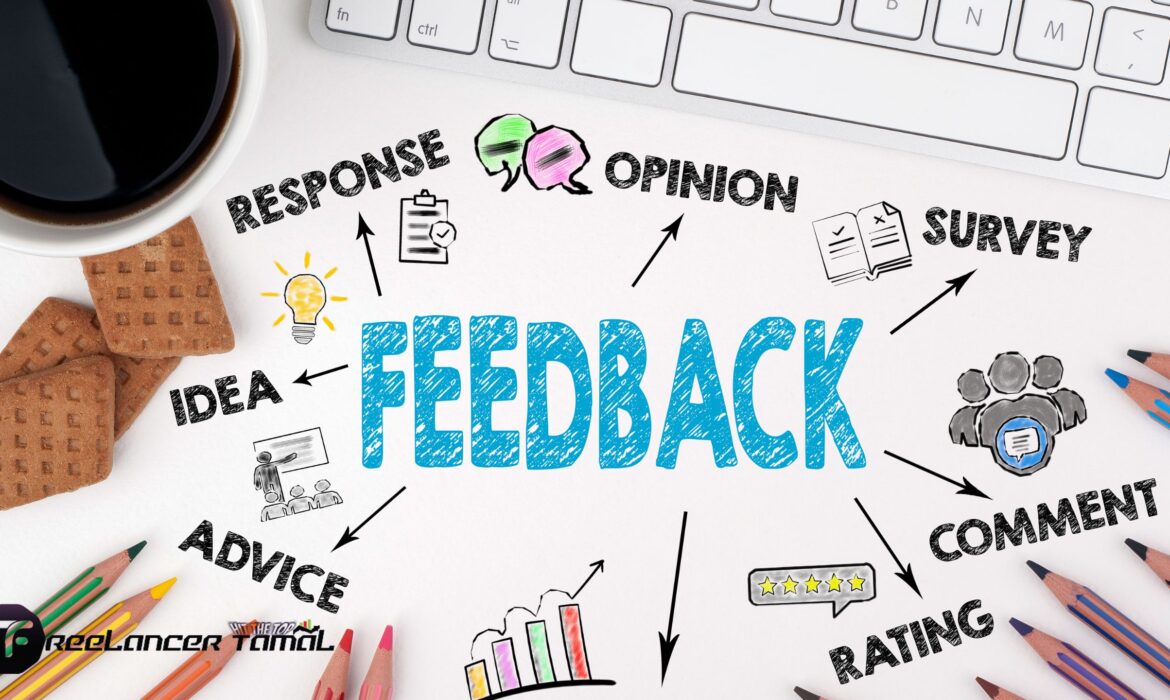
Understanding Customer Feedback Tools
Before we delve into the realm of customer feedback tools, it’s important to understand what these tools are and why they are so crucial to businesses today.
What are Customer Feedback Tools?
Customer feedback tools are digital instruments that allow businesses to collect, analyze, and manage feedback from their customers. These tools are often part of larger digital marketing tools suites, which might also include keyword research tools, social media management tools, and email marketing tools, among others.
From simple online surveys to sophisticated analytics platforms, customer feedback tools provide businesses with valuable insights into their customers’ experiences, preferences, and expectations. These tools can be used to collect feedback through various channels, including email, websites, social media, and even in-person interactions.
Importance of Customer Feedback
Why is customer feedback so important? Well, it’s a powerful mechanism that enables companies to understand their customers better and create better experiences for them. Companies can improve their products, services, and processes by actively collecting and analyzing customer feedback to meet customer expectations. Additionally, they can use this data to effectively design marketing campaigns to reach their target audience and drive sales.
The importance of customer feedback is underscored by numerous studies. For instance, a survey by HubSpot found that 93% of customers are more likely to make repeat purchases from companies that offer excellent customer service.
On the flip side, poor customer service can have severe repercussions. According to a study by Microsoft, 61% of customers have stopped doing business with a company due to poor customer service.
Moreover, there’s a direct link between customer service and customers’ spending habits. As per a study, 70% of customers are willing to spend more money with a company that provides excellent customer service (StartQuestion).
In conclusion, customer feedback plays a pivotal role in customer satisfaction, retention, and business growth. Therefore, investing in the right customer feedback tools is a step in the right direction for any business seeking to thrive in today’s competitive marketplace. Stay tuned as we review some of the popular customer feedback tools in the subsequent sections.
Key Features of Customer Feedback Tools
When evaluating customer feedback tools, it’s important to focus on their features. The right features can make a significant difference in the effectiveness of customer feedback collection and analysis. In this section, I’ll explore two key features to look for: real-time feedback collection and advanced data analysis and visualization.
Real-Time Feedback Collection
Real-time feedback collection is a vital feature of customer feedback tools. It allows businesses to capture customers’ sentiments and address their concerns promptly. This immediacy helps businesses respond quickly to customer issues, thereby improving satisfaction and loyalty (Source).
For instance, if a customer encounters a problem while using a product or service, real-time feedback tools can alert the company immediately. This allows the company to take immediate action to resolve the issue, preventing it from escalating and negatively impacting the customer’s perception of the brand.
This feature is important for businesses of all sizes and types, and is available in various digital marketing tools, such as social media management tools, email marketing tools, and even website analytics tools.
Advanced Data Analysis and Visualization
After collecting feedback, the next step is to analyze and visualize the data, which is where advanced data analysis and visualization features come in. These features can provide valuable insights and help companies identify patterns and trends in customer feedback.
For instance, advanced data analysis can help a company identify common pain points among its customers. It can also highlight popular features or aspects of the product or service that customers appreciate. These insights can help the company make data-driven decisions to enhance customer satisfaction and drive growth.
Visualization tools, on the other hand, can help to present these insights in a easily digestible format. They can turn complex data into simple charts and graphs that make it easy for everyone in the organization to understand the customer feedback.
One such tool that offers these features is Mopinion, which also provides access groups for advanced user management. This feature allows businesses to control user access and permissions within the customer feedback tool.
In conclusion, real-time feedback collection and advanced data analysis and visualization are key features to look for in customer feedback tools, and they play a crucial role in helping businesses make data-driven decisions to enhance customer satisfaction.
Review of Popular Customer Feedback Tools
When it comes to collecting and analyzing customer feedback, the market offers a variety of tools. I am going to review three popular customer feedback tools: HubSpot, Mopinion, and Rapidr.
HubSpot’s Customer Feedback Tools
HubSpot offers a comprehensive customer platform that includes marketing, sales, customer service, CMS, operations, and commerce software all on one platform (HubSpot). This platform includes a free CRM (Customer Relationship Management) tool as part of their offering.
In addition, HubSpot offers marketing automation software through their Marketing Hub and CRM software for sales teams through their Sales Hub. Both hubs come with free and premium plans available. Lastly, HubSpot offers customer service software through their Service Hub, with both free and premium plans available.
These tools allow businesses to collect, manage, and analyze customer feedback, helping to improve customer satisfaction and drive business growth.
Mopinion: A Data-Driven Tool
Mopinion is a robust, data-driven tool for gathering and analyzing customer feedback. Calvin Klein, for instance, uses Mopinion for data-driven decision making, suggesting that it is an effective tool for driving business decisions.
One unique feature of Mopinion is its access groups for advanced user management. This feature allows businesses to control user access and permissions within the customer feedback tool, ensuring that only authorized individuals can view and manipulate customer feedback.
Mopinion also keeps up with the latest trends and developments in the field of customer experience, as evidenced by its “Digital Customer Experience Benchmark 2023”.
Rapidr: Engaging with Customers
Rapidr is another powerful tool for collecting and engaging with customer feedback. For example, Kingdom Studios uses Rapidr to provide a public feedback page, collect different kinds of feedback and suggestions, and engage with customers to improve customer engagement and inform product development.
Rapidr’s ability to incorporate customer reviews, ratings, comments, and feedback makes it a comprehensive tool for enhancing customer satisfaction and driving business decisions.
These are just a few of the customer feedback tools available in the market. Depending on your business needs and goals, you may find one tool more suited to your requirements than others. Remember, the key is to choose a tool that aligns with your objectives, allows you to collect meaningful feedback, and provides actionable insights you can use to improve your products, services, and overall customer experience. For more on digital marketing tools, check out our articles on keyword research tools, social media management tools, and email marketing tools.
Using Customer Feedback Tools Effectively
In order to successfully leverage customer feedback tools, it’s essential to take two crucial steps: aligning the feedback with your business objectives and choosing the right metrics to measure customer satisfaction.
Aligning Feedback with Objectives
Customer feedback is a valuable resource that helps align your improvement efforts and user experience to get the desired outcome. However, feedback means little by itself. To be effective, you need to attach a clear action item to your customer feedback to drive progress. This is where customer feedback management (CFM) comes into play. CFM is the process of integrating and leveraging feedback collected from multiple channels to make your product or service better. It breaks your overall feedback management into actionable insights, helping streamline your efforts.
For example, if your objective is to improve your website’s usability, you should focus on feedback related to user experience and ease of navigation. If you’re aiming to enhance your product features, pay attention to feedback highlighting areas for product improvement.
It’s also worth noting that collecting feedback has become incredibly easy these days. The ubiquity of the internet and social media have taken surveys beyond traditional phone calls. From mobile apps to pop-ups to social media, you can turn any platform into your survey channel with simple tools (HappyFox Blog).
Choosing the Right Feedback Metrics
Choosing the right metrics is also crucial when using customer feedback tools. Some of the best customer survey metrics available today are the Net Promoter Score (NPS), Customer Satisfaction Survey (CSAT), and Customer Effort Score (CES). These metrics help gauge customer satisfaction and loyalty, which can, in turn, drive business growth.
| Metric | Description |
|---|---|
| Net Promoter Score (NPS) | Measures customer loyalty and willingness to recommend your business |
| Customer Satisfaction Survey (CSAT) | Assesses customer satisfaction with a product, service, or experience |
| Customer Effort Score (CES) | Evaluates the ease of interaction with your business |
You should choose the metric that best aligns with your objectives. If you’re focused on improving customer loyalty, NPS might be the most suitable. If you’re interested in measuring customer satisfaction following a specific interaction, CSAT could be the best choice. For assessing the ease of use of your product or service, consider using CES.
Big companies use customer feedback tools to measure customer satisfaction and loyalty. By gathering feedback, they can identify areas where they are falling short and take steps to improve customer satisfaction, leading to increased customer loyalty and retention.
To further explore and compare a range of digital marketing tools, including customer feedback tools, visit our comprehensive guide to digital marketing tools.
Case Studies of Customer Feedback Tools
To better understand the significance of customer feedback tools, let’s take a closer look at how two tech giants, Apple and Google, incorporate these tools in their customer feedback strategies.
Apple’s Use of Feedback Tools
Apple, a global leader in technology, is renowned for its attention to customer satisfaction. They employ a multi-faceted approach to gather customer feedback. This includes methods such as product feedback, website feedback, support tickets, and Net Promoter Score (NPS) surveys.
Apple uses these feedback mechanisms to gain insights into their customer needs, preferences, and experiences. The data collected is then utilized to inform various areas of their business, including product development, marketing campaigns, and even employee satisfaction.
This comprehensive use of customer feedback tools allows Apple to continuously improve their products and services based on real user experiences and expectations. It’s an approach that underlines their commitment to delivering high-quality customer experiences and maintaining their reputation for excellence.
Google’s Approach to Customer Feedback
Google, another dominant player in the tech industry, utilizes customer feedback tools like Google Forms and Google Surveys to gather both quantitative and qualitative data from their users. This feedback plays a crucial role in their decision-making processes and helps them refine their products and services to better serve their users.
Google’s approach to customer feedback is driven by a deep understanding of the value of customer insights. By actively seeking and analyzing customer feedback, Google is able to identify areas of improvement, uncover user needs, and make data-driven decisions that support their business goals and objectives.
Both Apple and Google’s use of customer feedback tools emphasize the importance of understanding customer needs and preferences in delivering superior products and services. These case studies illustrate how the right feedback tools can help businesses gather actionable insights, drive improvements, and ultimately, enhance customer satisfaction.
As we delve deeper into the world of digital marketing tools, such as website analytics tools or content marketing tools, it’s clear that customer feedback tools play an integral role in shaping successful business strategies. By effectively collecting, analyzing, and acting on customer feedback, businesses can deliver an experience that not only meets but exceeds customer expectations.
The Impact of Customer Feedback Tools
In the realm of digital marketing, customer feedback tools are a vital asset. They not only help businesses understand their customers’ needs and expectations, but they also have a profound impact on enhancing customer satisfaction and driving business decisions and growth.
Enhancing Customer Satisfaction
Customer satisfaction is a key determinant of a company’s success. According to a survey by HubSpot, 93% of customers are more likely to make repeat purchases from companies that offer excellent customer service. Customer feedback tools play a pivotal role in achieving this by providing valuable insights into what customers like or dislike about a product or service.
These tools can help you identify areas of improvement and take necessary actions to rectify issues, thereby enhancing customer satisfaction. In fact, StartQuestion reports that 70% of customers are willing to spend more money with a company that provides excellent customer service.
Driving Business Decisions and Growth
Beyond improving customer satisfaction, customer feedback tools can also drive strategic business decisions. They provide data-driven insights that can guide product development, marketing strategies, and customer service improvements.
For instance, if feedback indicates that customers are unhappy with a product, the business can investigate the problem and take steps to improve the product or address the issue directly with the customer. On the other hand, positive feedback can highlight a company’s strengths, which can then be leveraged in marketing campaigns.
However, it’s not enough to just collect customer feedback. Businesses must also act on it. Microsoft’s study shows that 61% of customers have stopped doing business with a company due to poor customer service. Moreover, StartQuestion states that 80% of customers will switch to a competitor if they have a negative experience with a company (StartQuestion).
In conclusion, the right implementation of customer feedback tools can be a game-changer for businesses. By enhancing customer satisfaction and driving strategic decisions, these tools can significantly contribute to a business’s growth. However, they should be used in conjunction with other digital marketing tools such as keyword research tools, email marketing tools, and website analytics tools to maximize their effectiveness.










